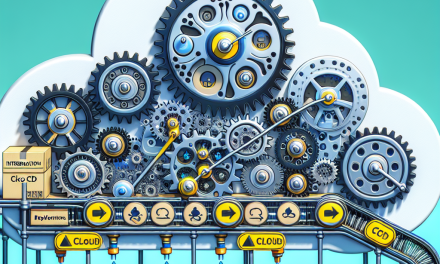In today’s fast-paced digital landscape, organizations are increasingly adopting container orchestration platforms like Kubernetes to manage their applications effectively. However, with the growing complexity of distributed systems, ensuring optimal performance has become a crucial focus for IT teams. One of the most effective approaches for enhancing application performance in Kubernetes environments is the implementation of observability frameworks. This article explores how observability can elevate application performance by providing deep insights and data-driven decision-making capabilities.
Understanding Kubernetes and Observability
Kubernetes is a powerful open-source platform for automating the deployment, scaling, and management of containerized applications. While Kubernetes provides robust infrastructure for managing workloads, it’s the observability frameworks that enable organizations to monitor, troubleshoot, and optimize application performance.
Observability in the context of Kubernetes refers to the ability to infer the internal state of a system based on the data it generates—be it through logs, metrics, or traces. By capturing and analyzing this data, organizations can gain a comprehensive understanding of their applications’ behavior under various conditions, which ultimately leads to improved performance.
The Pillars of Observability
To achieve effective observability, teams should focus on three key pillars:
-
Metrics: Metrics provide quantitative data that can be used to assess the performance of applications and infrastructure. Metrics such as CPU usage, memory consumption, and response times are essential for understanding performance trends and anomalies. In Kubernetes, tools like Prometheus can be employed to collect and query time-series data, enabling teams to spot performance issues before they escalate.
-
Logs: Logs provide detailed information about events happening in an application or system. In a distributed environment like Kubernetes, logs can help trace requests across services and identify bottlenecks. Tools such as Fluentd and Elasticsearch can be consolidated to aggregate, filter, and analyze logs efficiently, thus facilitating rapid debugging and performance tuning.
- Distributed Traces: Distributed tracing enables teams to monitor requests as they flow through various services in a microservices architecture. By visualizing how requests traverse through different components, organizations can identify latency issues, service dependencies, and bottlenecks. Solutions like Jaeger and OpenTelemetry provide robust tracing capabilities, crucial for understanding application performance in a Kubernetes environment.
Benefits of Implementing Observability Frameworks
Investing in observability frameworks offers numerous benefits for Kubernetes-based applications:
1. Proactive Performance Management
With enhanced visibility over application performance, teams can proactively identify potential issues before they impact end-users. Metrics and logs provide actionable insights, facilitating timely interventions and adjustments.
2. Enhanced Troubleshooting
When performance issues arise, observability frameworks allow teams to drill down into the root causes quickly. By correlating logs, metrics, and traces, IT teams can minimize mean time to resolution (MTTR) significantly, leading to better service reliability.
3. Continuous Improvement
Observability empowers teams to adopt a culture of continuous improvement. By analyzing performance trends and understanding usage patterns, organizations can iterate more effectively on their applications, fine-tuning features and optimizing performance based on real user behavior.
4. Cost Efficiency
With observability, organizations can optimize resource allocation and usage. By identifying underutilized services or workloads with poor performance, teams can make informed decisions about scaling and resource distribution, ultimately saving on infrastructure costs.
Conclusion
In a world where customer satisfaction hinges on application performance, embracing observability frameworks is not just an option—it’s a necessity. By integrating metrics, logs, and distributed tracing into their Kubernetes environments, organizations can unlock deep insights that drive performance enhancements. As Kubernetes continues to evolve and become more complex, investing in observability capabilities will not only help organizations manage their applications more effectively, but also deliver superior user experiences that set them apart in the competitive marketplace.
Incorporating observability into your Kubernetes strategy is not merely about technology—it’s about ensuring reliability, enhancing performance, and fostering a culture of continuous improvement that supports your organization’s long-term goals.





